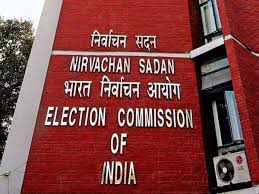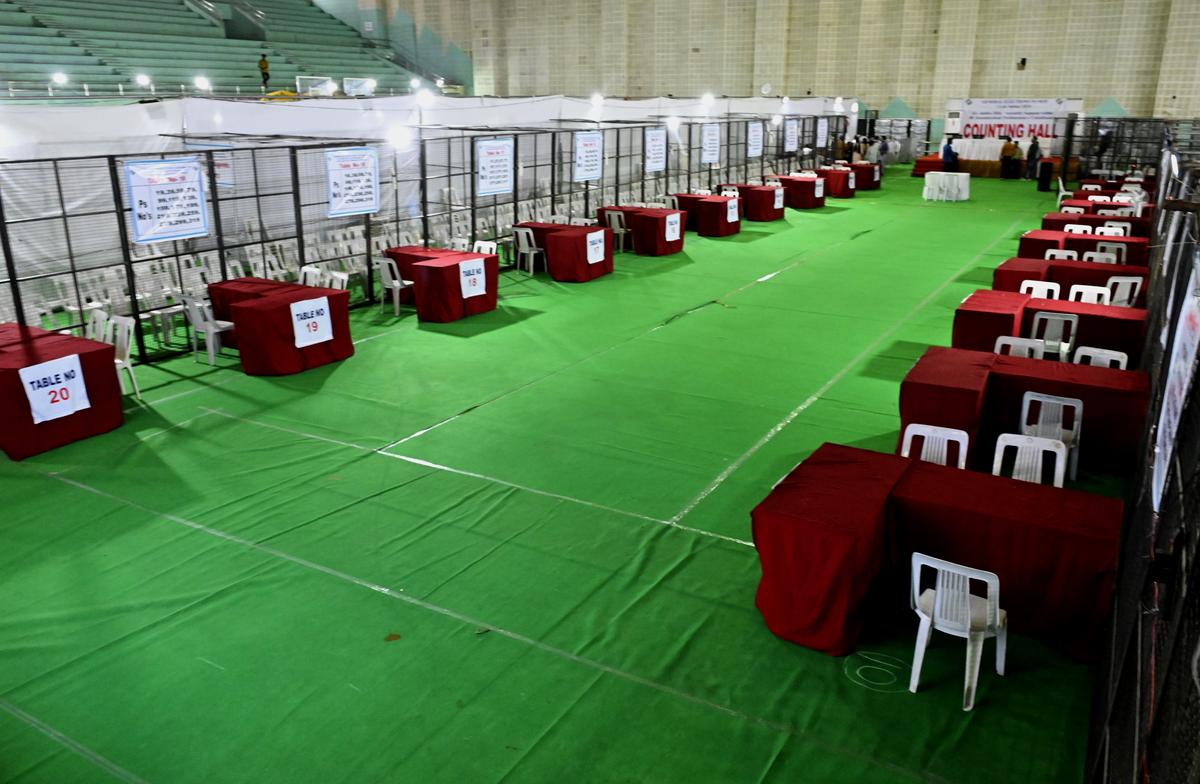Image: The Hindu
After the votes are tabulated on June 4 and the results are in, the leading party of India’s general election, which took place from April 19 to June 1, is anticipated to establish a new government by the middle of June.
Table of Contents
VOTE COUNTING
Decentralised vote counting takes place concurrently at counting locations in each of the nation’s 543 constituencies. On June 4, the counting process starts at 8 a.m. (0230 GMT) with the tallying of postal ballots that are only accessible to a few categories of individuals, such as those with impairments or those who work in critical services like law enforcement and some government officials. Votes cast in Electronic Voting Machines (EVMs), which India has been using since 2000 to replace paper ballots in national and state elections, are counted after paper ballots.
CRITICISM OF THE PROCESS
Every vote cast through the EVM is recorded electronically, and in addition, a corresponding paper slip is generated, visible to the voter, and preserved in a sealed box. The Election Commission of India (ECI), which oversees elections, counts and compares paper ballots to electronic votes at five randomly chosen polling places that are determined by lot in various electoral segments. The Supreme Court has declined to impose any changes on the vote-counting procedure, despite the fact that certain opponents and members of civil society—including some political parties—want verification to be conducted at more booths in order to promote openness. The ECI has refuted claims that EVMs are tamperable, characterising them as infallible.
FORMING THE GOVERNMENT
As soon as the counting is over, the results for each constituency are announced. India has a first-past-the-post electoral system, meaning that the candidate with the most votes wins whether or not they receive a majority. By the afternoon of the counting day, result trends are usually evident and broadcast on television news networks. Hours may pass before the ECI releases the official count. The president invites the head of the party or a coalition with more than half the seats to form the government after the ECI releases the results for all 543 seats.
The prime minister to head the government is then selected by the party or coalition holding at least 272 MPs. Modi’s Bharatiya Janata Party gained 303 seats in the 2019 elections, with its allies in the National Democratic Alliance (NDA) securing roughly 50 more. Only 52 seats were won by the main opposition Congress, but its allies took home 91 seats. The president invites the party with the most seats to form a government and later demonstrate a majority on the house floor if no political party or alliance wins a simple majority, creating a situation known as a “hung house”. The lower house of parliament, the Lok Sabha, must be reorganised before its current term expires on June 16.
EXIT POLLS
The NDA was predicted by the bulk of exit polls on Saturday to secure a two-thirds majority in the lower chamber of parliament. An analysis of five prominent exit polls suggested that the NDA would secure anywhere from 353 to 401 seats. Exit polls, which are carried out by polling organisations, have a mixed record in India. Many times, the results are incorrect, and experts claim it is difficult to conduct accurate exit polls in such a vast and diverse nation.

HOW TO TRACK RESULTS?
Live counting trends and results can be seen at https://results.eci.gov.in/, the official Election Commission of India (ECI) website for those who are closely watching the results. Furthermore, the most recent information will be accessible through the Voter Helpline App, which is compatible with iOS and Android smartphones.



